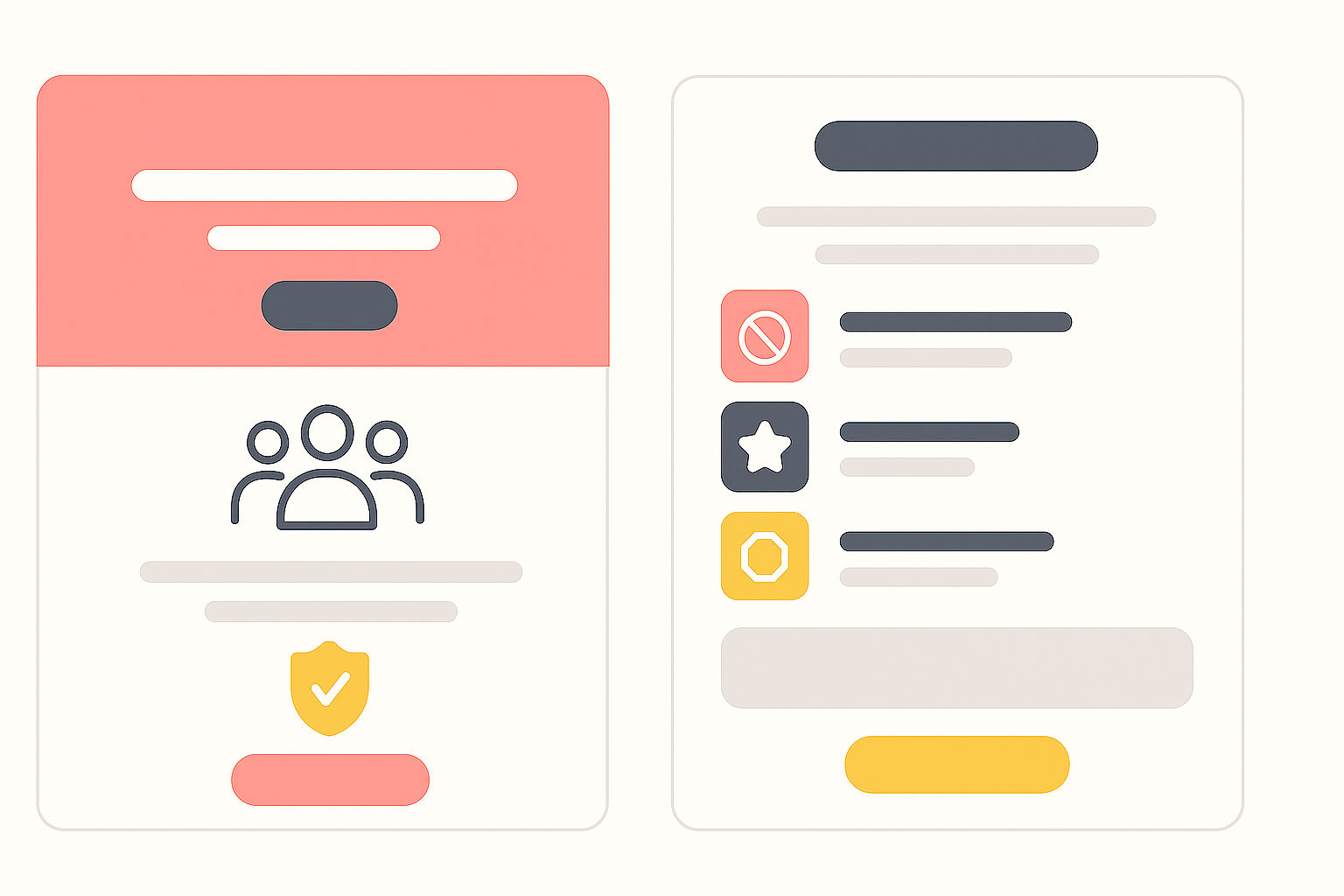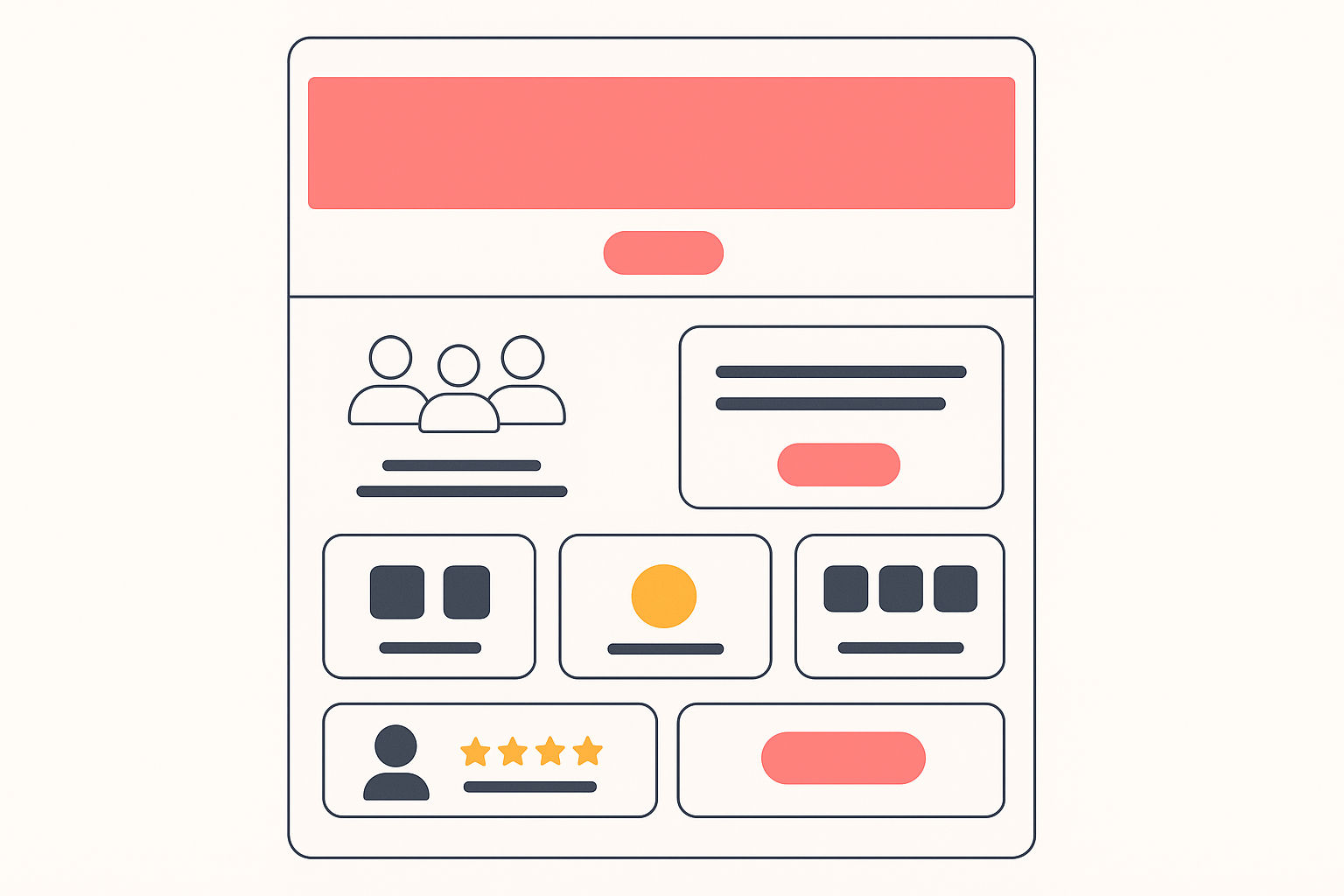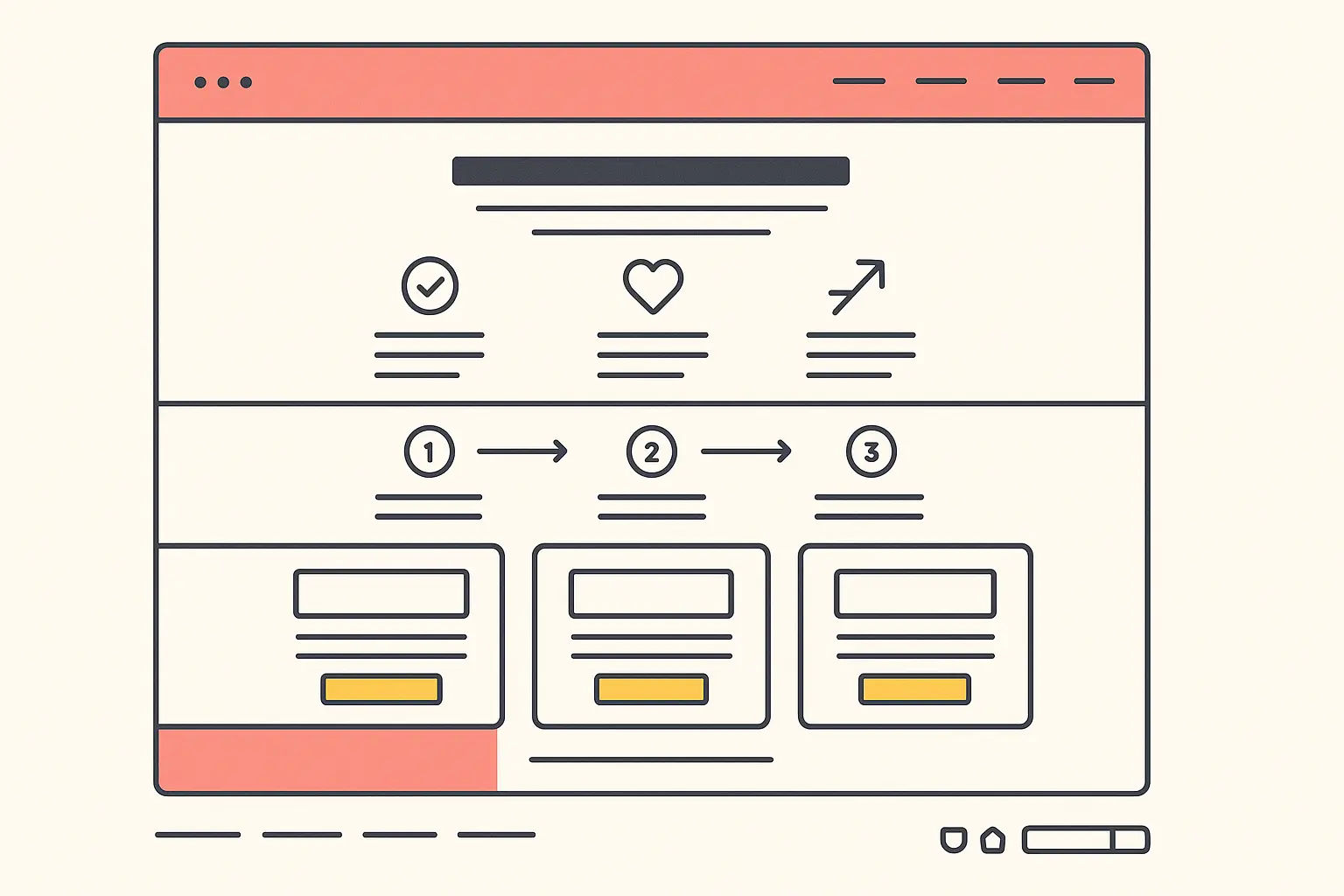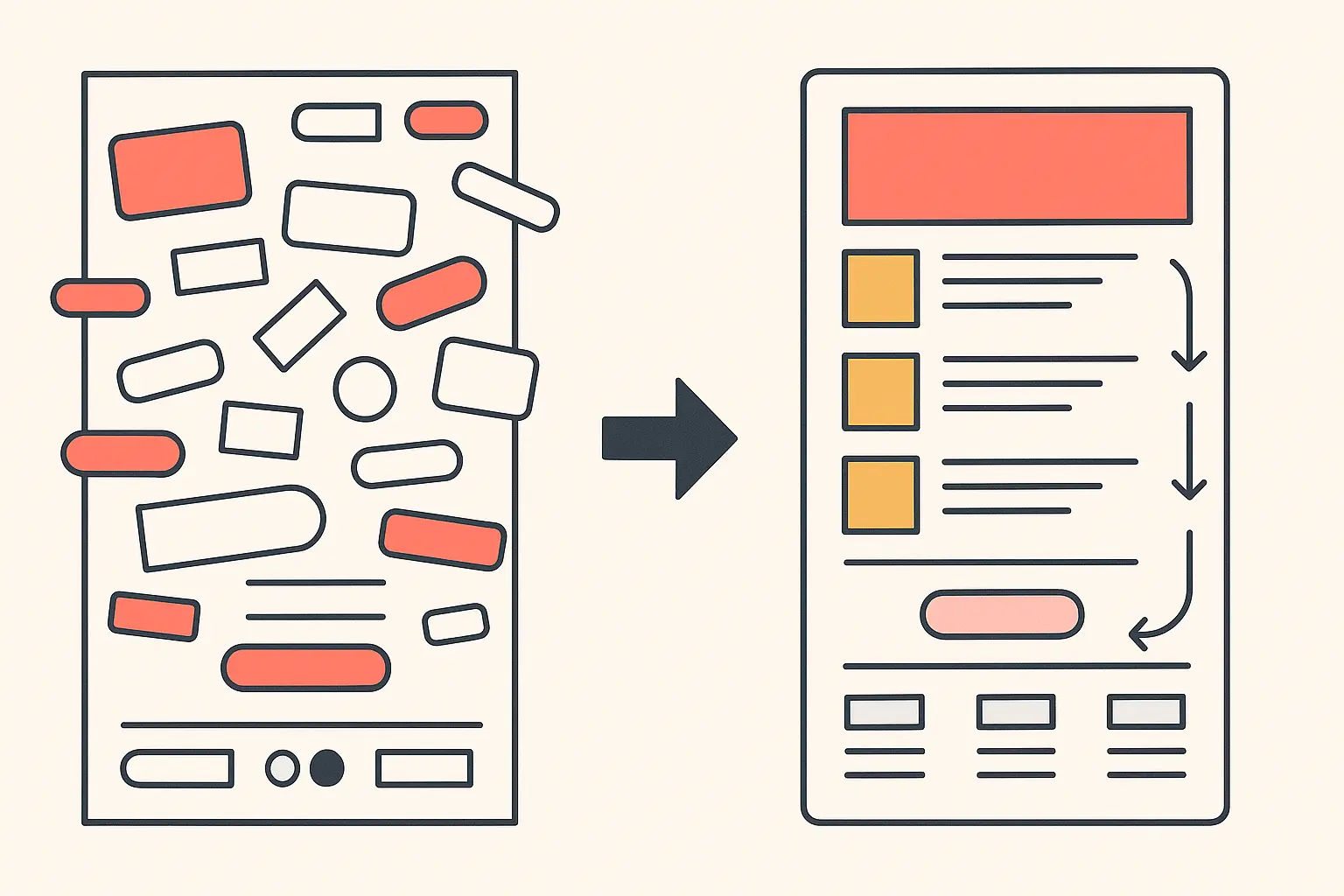
You land on a homepage. You see a vague headline, stock photo, four columns of services… and bounce.
What worked in 2015 doesn’t hold attention in 2025.
Modern visitors:
- Skim
- Scroll fast
- Judge credibility in 3 seconds
- Decide with their thumbs on mobile
This post breaks down the website layouts that will actually convert in 2025 and shows how to structure your homepage, service pages, and CTAs to reflect how real buyers move today.
What’s Changed About How Visitors Use Your Site
2025 users don’t “explore.” They land → skim → decide.
Smart layouts now focus on:
- Faster clarity (what, who, how)
- Mobile-first structure
- Fewer links, more flow
- Clear visual hierarchy
- CTAs placed where buying energy spikes
You don’t need a full redesign, just better structure.
Homepage: One Goal, One Scroll
Your homepage is not your company bio. It’s a conversion path.
A homepage layout that works in 2025 follows this pattern:
Hero section: one-line promise + CTA (no slider)
Who it's for + what problem you solve
Visual proof (logos, screenshots, stats)
Core offers or services (2–3, max)
Testimonials or client results
Final CTA: book, buy, or sign up
Everything leads downward. Every section earns the next scroll.
About Page: Replace the Timeline With a Trust Trigger
The mistake? Using your About page to talk about you. The fix? Use it to connect and de-risk.
What works in 2025:
- 1–2 sentences on your mission, from their point of view
- Short bullet timeline (optional)
- Section: “Why people hire us instead of X”
- Section: “Who this is a fit for / not for”
- Photo of founder/team + plain language bio
CTA at bottom (book, read, explore, or join)
Service or Sales Pages: Fewer Sections, More Specificity
Skip the 1,000-word service pages that list everything. Instead, structure them like a pitch.
Winning service page layout:
Problem → show you understand
Promise → what changes with you
Process → 3–4 steps, visually laid out
Proof → 1–2 real stories or metrics
Pricing or “what’s included”
CTA (no “learn more” use “start here” or “book call”)
Bonus: Add inline FAQs under objections (not at the bottom).
Mobile: Layout Should Feel Like an App, Not a Website

By 2025, most websites will be viewed on mobile first. That changes layout rules.
What’s working now:
- Sticky bottom CTA buttons
- No hero carousels
- Vertical stacking, not grid blocks
- Tap-friendly FAQ accordions
- Short scroll anchor links (“Jump to pricing”)
Remove anything that requires zooming, pinching, or hunting.
One-Pagers: Fast, Focused, Conversion-Ready
Not every business needs a site with 5+ pages. One-page sites work when:
- You have one clear offer
- You sell a productized service
- You want to test messaging before scaling
Effective one-page structure:
- Headline + subtext
- Benefits / outcomes
- How it works
- Packages or pricing
- Social proof
- Call-to-action (inline, not buried)
Use anchor links at top (they feel like a full site, but aren’t).
Footer: Stop Making It a Sitemap
Footers shouldn’t feel like a phone book.
Use this layout:
- 3–4 links max (Services, About, Blog, Contact)
- Copyright + current year
- Simple nav or booking CTA
- Trust icons (certifications, associations, SSL badge)
- Optional: email opt-in or signup link
Think of it like a second CTA bar, not a dumping ground.
Page Layouts to Retire in 2025

Kill these now:
- Slider carousels in the hero section
- “We believe in synergy and innovation” as your headline
- 6-column icon blocks with no hierarchy
- FAQ sections that are just filler
- Dead-end pages with no CTA
Everything should have a purpose or go.
Design Isn’t the Problem Structure Is

You don’t need a prettier site. You need:
- Fewer choices
- Smarter sequencing
- Better CTA placement
- Clearer messaging hierarchy
Good layout makes every scroll feel intentional.
Before you redesign, restructure.
Conclusion: In 2025, the Best Layout Is the One That Gets Out of the Way
Your website shouldn’t impress. It should convert.
It should:
- Show who you help
- Say what problem you solve
- Present the next step clearly
- Be just long enough to answer what matters
Structure > style. Clarity > cleverness. Action > animation.
Simplify your layout. Make each scroll do something. That’s what works in 2025.

Custom video production at scale
Aneeverse covers all video needs whether you're telling your brand story, launching a product or running ads. Discover how we can help you scale.
